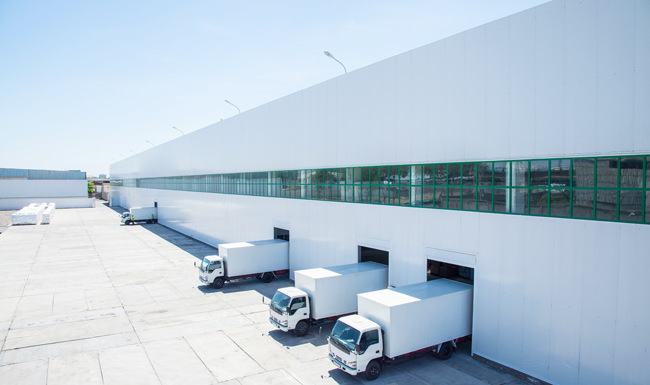
How Vendor Managed Inventory (VMI) Strengthens Supply Chain Resilience and Collaboration
To optimize inventory management, retailers and suppliers are increasingly turning to Vendor Managed Inventory (VMI) tools that transfer the responsibility…
Generix Ushers in a New Era of Intelligent Commerce for Retailers with AI-Driven Innovation Read the press release

Not only has labor become more expensive and harder to come by, but manual approaches fall short miserably when measured up against technologically-advanced, automated yard management systems (YMS).
A collaborative tool for scheduling and managing the warehouse or distribution center (DC) yard, YMS helps logistics team members anticipate and plan loading and unloading flows right down to the smallest detail. It also supports on-time delivery and optimal resource use; synchronizes warehouse operations with yard events; and helps maintain a smooth flow of vehicle movement in and out of the yard. “The global supply chain has been growing more complex and sophisticated over the past few years, and now that the COVID-19 pandemic has forced the adoption of more agile and streamlined processes,” SupplyChain reports, “there is a greater emphasis on the importance of digitization and technological solutions.”
One solution that SupplyChain says has had “tremendous impact on the logistical side of supply chain networks” is dock and yard management. It defines dock and yard management as the “creation of systems that address all activities related to or impacting the dock and yard, taking into consideration relevant capacities, resource availability, and constraints, as well as demand and company goals.”
When companies start processing a higher volume of orders, stock densifies, operations speed up, daily trucks come and go by the dozen, and every inch of space on the docks has to be used. When this happens, being able to anticipate the loading and unloading flows—and plan them down to the slightest detail—become table stakes for the companies operating these yards and docks. Synchronizing warehouse operations with events in the yard has always been a critical aspect of delivering on time and maximizing resources. With longer queues of trucks to manage and regulatory issues like the hours of service (HOS) rules to consider, pressure to reduce driver wait times is intensifying. Designed for businesses that want to best plan and optimize their yard operations in order to improve their customer service rate and logistical performance, YMS helps organizations offer the highest level of service to their customers; efficiently manage operations and take charge of unexpected events in a dynamic way; reduce operating costs; and make best use of available resources.
Generix YMS also easily interfaces with WMS, TMS, automated barriers, access controls and other onsite digital tools. An application with a proven return on investment (ROI), the solution presents clear benefits for shippers that use it, including:
Fundamentally, Gartner’s Bart De Muynck tells Logistics Management that YMS helps solve one of the most pressing supply chain challenges for any shipper: just how efficiently carriers and other parties are using the time clock. This is particularly important in an HOS world, where drivers are limited in terms of how much time they can spend behind the wheel.
“Imagine the implications of a driver having to stay at a location for an extra three hours,” he points out, noting that this would create a 75% increase in the expected crash rate. “Truck driving is a profession that causes a high number of driver fatalities, many of which could be happening as a result of detention in the yard.”
Solutions exist today that can ensure any warehouse or distribution center operates at peak efficiency, 24 hours a day, seven days a week. From Warehouse Management Systems (WMS) and Transportation Management Systems (TMS) to Manufacturing Execution Systems (MES) and more, software platforms can deliver a wide range of benefits that ultimately flow to the warehouse operator’s bottom line.

To optimize inventory management, retailers and suppliers are increasingly turning to Vendor Managed Inventory (VMI) tools that transfer the responsibility…

In an ever-evolving logistics environment, agile and precise warehouse resource management is essential to remain competitive. With increasing volumes driven…

France’s electronic invoicing reform relies on a Y-architecture, where Partner Dematerialization Providers (PDPs) play a central role in issuing and…

Work with our team to build your ideal supply chain software stack and tailor it to your unique business needs.